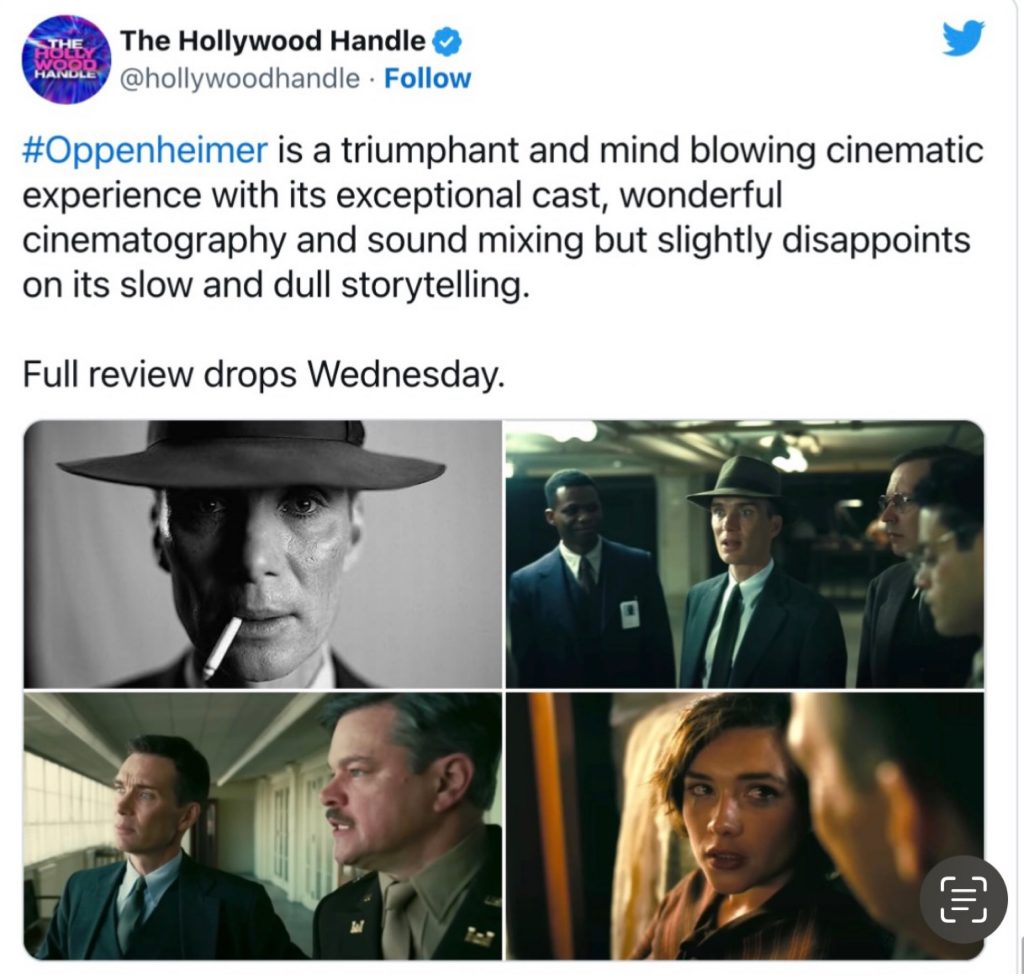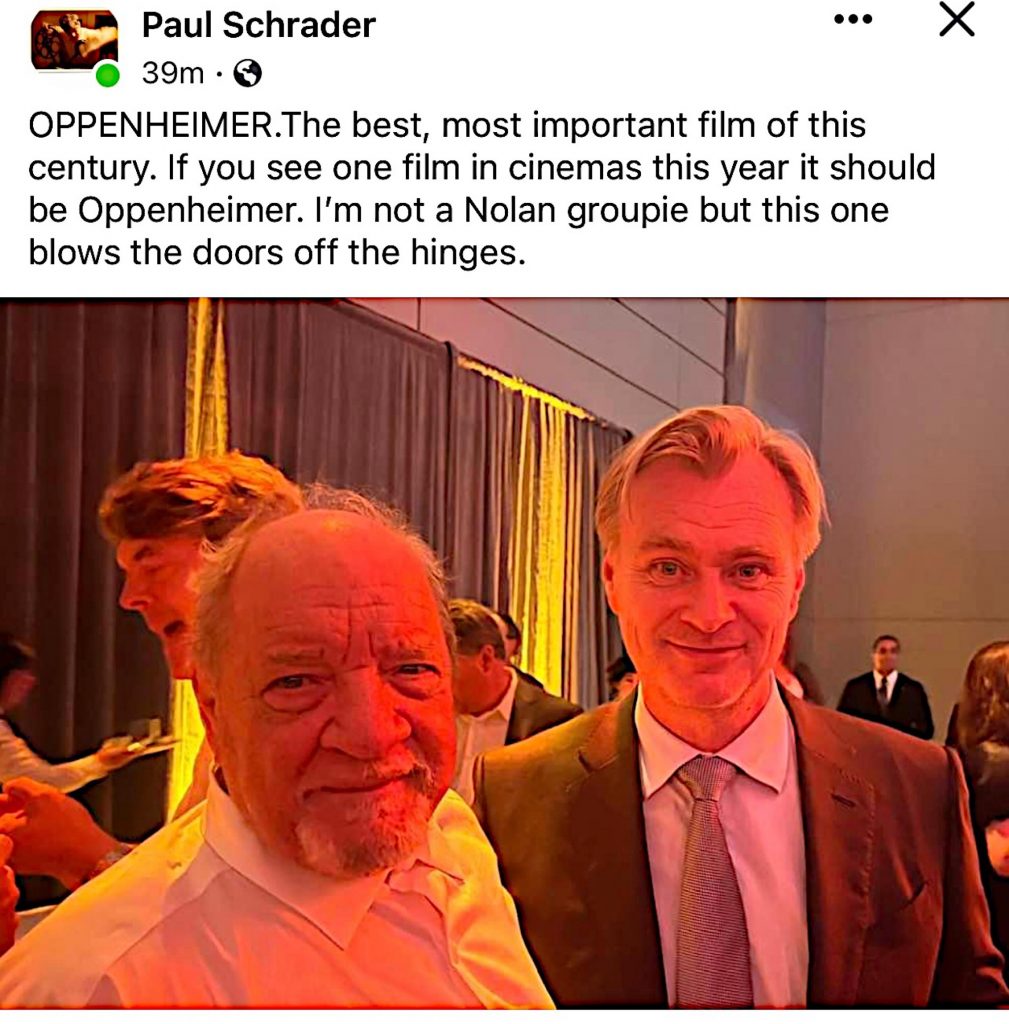
Day: July 17, 2023
Father and Daughter Reunion
This morning I read Seth Abramovitch‘s THR piece about Tatum O’Neal (7.17.23), titled “After Her Debilitating Stroke, Tatum O’Neal Attempts to Heal a Fractured Relationship With Dad Ryan O’Neal.”
Subhead: “Recovering from an overdose-induced crisis that nearly killed her and forced her to relearn how to speak, the actress looks back on her life and career: ‘Weird shit happened. It kind of went in the wrong direction to happiness.'”
The apparently ailing but buoyant-of-spirit Ryan O’Neal, 82, and daughter Tatum, 59 — posted on Instagram last April.
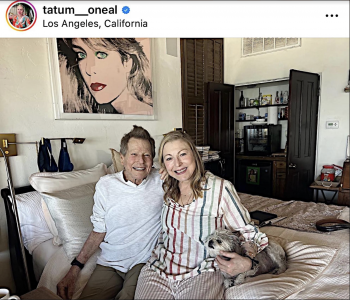
“Ryan O’Neal’s Five Untouchable Years,” posted on 8.4.19:
I prefer to sidestep the biological reality of Ryan O’Neal being 78, and to think of him as the guy he was in the early to mid ’70s, when things were as good as they would ever get for him.
I had two minor run-ins with O’Neal in the ’80s. The first was after an evening screening of the re-issued Rear Window** at West L.A.’s Picwood theatre (corner of Pico and Westwood) in late ’83. As the crowd spilled onto Pico O’Neal and his date (probably Farrah Fawcett) were walking right behind me, and I heard O’Neal say “that was sooo good!” Being a huge Alfred Hitchcock fan, this sparked a feeling of kinship.
Four years later I was a Cannon publicity guy and charged with writing the press kit for Norman Mailer‘s Tough Guys Don’t Dance, which didn’t turn out so well. I for one liked Mailer’s perverse sense of humor.
I did an hour-long phoner with O’Neal, and my opening remark was that he was becoming a really interesting actor now that he was in his mid 40s with creased features. He was too good looking when younger, I meant, and so his being 46 added character and gravitas. O’Neal was skeptical of my assessment but went along — what the hell.
In fact O’Neal’s career had been declining for a good five or six years at that point. He knew it, I knew it — we were doing a press-kit-interview dance because there was nothing else to say or do.
O’Neal’s last hit film had been Howard Zeiff and Gail Parent‘s The Main Event (’79), which critics panned but was popular with audiences. He had starred in four mezzo-mezzos before that — Peter Bogdanovich‘s Nickelodeon (’76), Richard Attenbrough‘s A Bridge Too Far (’77), Walter Hill‘s The Driver (’78) and John Korty‘s Oliver’s Story.
Consider this HE anecdote about some 41-year-old graffiti on a New York subway poster.
O’Neal’s career peak lasted for five years (’70 to ’75) and was fortified by a mere four films — Arthur Hiller‘s Love Story (’70), Bogdanovich’s What’s Up Doc? (’72) and Paper Moon (’73), and Stanley Kubrick‘s Barry Lyndon (’75). (The Wild Rovers and The Thief Who Came to Dinner, which O’Neal also made in the early ’70s, were regarded as mostly negligible and therefore didn’t count.)
O’Neal has said for decades that his career never really recovered from Barry Lyndon — Kubrick had changed the film entirely in editing, and had made him look like a clueless and opportunistic Shallow Hal of the 18th Century. Plus the film had lost money.
Is Ken Gay? Uhm, Well…
When asked by Attitude magazine if Ryan Gosling‘s Ken is gay [start at 2:35 mark] and if the film is inclusive in this particular respect, Barbie star-producer Margot Robbie answers with a flabbergasting sidestep**:
“It is but they are all dolls…so they don’t actually have sexual orientations because they don’t have any organs or reproductive organs.”
Due respect, but that’s a dishonest reply. Ken is as gay as Liberace or William S. Burroughs ever were, and probably more so.
“They’re Kenning all over each other.” — Ryan Gosling.
“Ken Has Always Been Gay,” posted on 6.16.22.
Exposing IMAX Hoo-Hah
Hollywood Onramp‘s Jay Troutman (or is it Jake Troutman or Jay Cutler?) has spilled the visual beans on Oppenheimer. Sorry, fans, but it sounds like the same con as before….a wowser factor that is cool but limited.
A relatively small percentage of the viewing public will be watching Oppenheimer in a proper IMAX theatre on a massive screen. And it’s time to come clean: Like Tenet and other IMAX-shot Nolan films, only a certain portion of this upcoming film (7.21) will be projected within the boxy 1.43:1 aspect ratio.
A healthy-sized portion will be presented within a 1.9:1 or 2.2:1 aspect ratio — more or less 2:1 a la Vittorio Storaro. So all the “you absolutely must see it in true-blue IMAX!” hype is basically a shell game.
True-blue IMAX delivers a 15-perf, 70mm image with a boxy aspect ratio (i.e., 1.43:1 or a bit wider than 1.37:1, only much bigger) and a widescreen 1.9:1 or 2.2:1 aspect ratio for smaller, non-IMAX-scale screens.
“The thing is, the IMAX camera is big and loud, so it’s not great for scenes in small rooms with quiet dialogue. Sometimes [the editors] would be like ‘is there a lawnmower in this scene? Where’s the lawnmower coming from?” So Chris Nolan also used the Panavision System 65 5-perf format.”
Eric Kohn: “The bulk of Oppenheimer is men in rooms talking.”
In the shooting stage “both formats use the same film stock, but IMAX captures an image 15 perforations wide while System 65 captures an image five-perfs tall.
“In order to mix these formats together, the five-perf shots are optically blown up to 15 perf and the IMAX 15 perf shots are optically reduced in size.
“You can also see that the different formats result in different shapes, in what we call aspect ratios. The IMAX image is taller than the five-perf image. That means when you go to a proper IMAX theatre with a 1.43:1 screen, anything shot with an IMAX camera will fill the full screen while anything shot by the five-perf camera will have black bars at the top and bottom.
“If you go see the five-perf 70 millimeter print, which [Universal] marketing is calling 70 millimeter film, the image will have a 2.2:1 aspect ratio, and anything shot by the IMAX camera will have have the top and bottom cut off.
“Now you might think that would be a deal-breaker, but [Chris Nolan and his team] always had these different frames in mind. And the 2.2:1 frame is actually what Chris and editor Jennifer Lame were looking at through most of the editing process.
“We had both 2.2 and 1.43 footage in our AVID timelines so they could watch both to make sure everything was working, but the main aspect ratio we worked in was 2.2.”
“…And The Seven Magical Diverse Gender Nonconforming Creatures”
“This right here is the decline of western culture, summed up in a single image. And this movie is the literal personification of everything wrong with modern entertainment.” — from The Critical Drinker’s “Snow White Looks Hilariously Bad.”
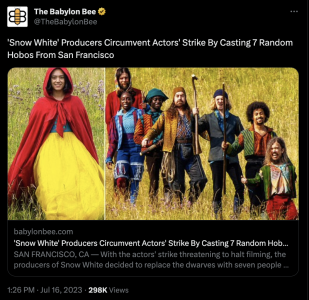
DeSantis Is Obviously Finished
“I’m not sure that [Ron DeSantis] is very good at this. Charmless is putting it nicely with this man, who is a bit dull.” — Brendan Buck.
DeSantis just doesn’t have the spirit or the lift. He has beady eyes, a squashed-in nose and a sourpuss manner. He’s more than 20 points behind Donald Trump, and is obviously toast.
If I were a Republican primary voter I wouldn’t like the idea of Tim Scott all that much.. I would be learning toward Chris Christie, who is overweight but sensible and practical, or Vivek Ramaswamy.
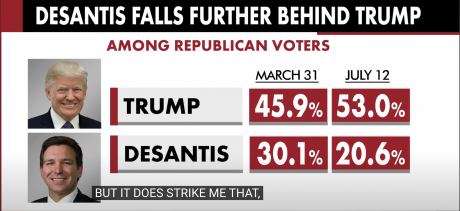

The Kid and the Curmudgeon
Alexander Payne‘s The Holdovers is going to be excellent…that’s fairly obvious. And this time Paul Giamatti, as a tough-minded but emotionally pained professor at a prep school (Deerfield Academy), may actually get nominated for and perhaps even win a Best Actor Oscar, an award that he should have won 18 years ago for his Miles Raymond performance in Payne’s Sideways (’04).
Don’t forget — the Academy didn’t even nominate Giamatti for that superbly sad-but-hilarious, on-target performance.
The Holdovers is set during the 1970 (and early ’71) Christmas holiday, partly at Deerfield and partly at the rich-guy mansion** of young Angus (Dominic Sessa), who has no family to hang with during Christmas because his wealthy parents are dicks.
Written by David Hemingson, it’s essentially a four-character piece (Giamatti, Sessa, Da’Vine Joy Randolph, Carrie Preston) in which Giamatti gradually steps into the parental void as he gruffly bonds with Sessa, etc. Randolph plays Deerfield’s head cook, Mary, whose son was recently killed in Vietnam. Meanwhile Angus’s budding relationship with Preston’s Lydia Crane….actually, I’m unsure about this aspect.
It’s not just the trailer’s atmospheric details that convey the early Nixon era (dates on grading papers, longish hair and sideburns, color scheme, Badfinger‘s “No Matter What”) but the somber-toned, square-jawed, semi-stentorian narration at the very beginning.

